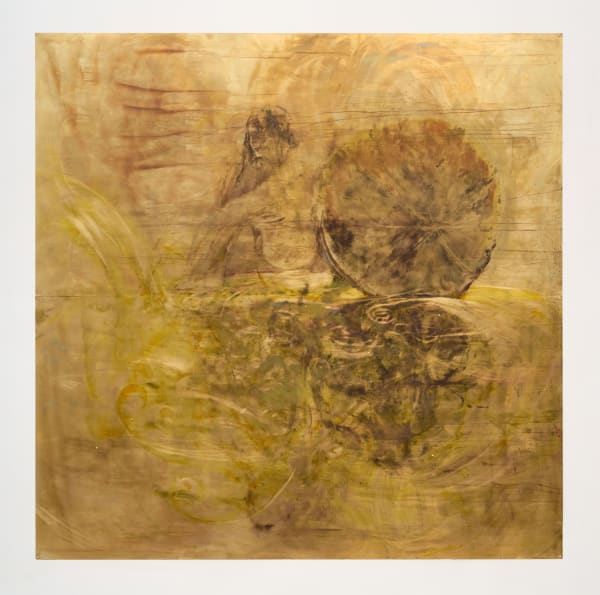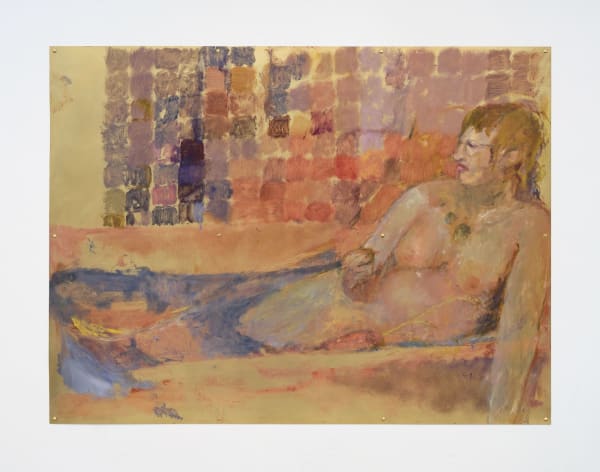Willa Wasserman: Quickening
Abortion was not always a crime. During the eighteenth and early nineteenth centuries…[abortions] were illegal only after “quickening”…
Leslie Reagan, When Abortion Was a Crime: Women Medicine and Law in the United States: 1867–1973
I will start with baby steps / goo goo ga ga / you don’t mean that much at all…
François Ghebaly is proud to present Quickening by Willa Wasserman, the New York-based painter’s first solo exhibition at the gallery.
Quickening: a pregnant person’s first perception of fetal movements. The notion of quickening is itself ancestral; the Old English cognate for quick means quite literally “sentient” and was first in use over a millennium ago. Quickening is our earliest, and remains our only, phenomenological yardstick for incipient life. Modern medicine—with its tools pressed into service by lawmakers—has supplanted the pregnant person as the entity that perceives when a life has started. But they still feel the proverbial kick.
For Willa Wasserman, the maternal allegory lends both subject and atmosphere. A seasoned metalworker, Wasserman’s paintings on brass and linen often convey her visceral fascination with dreams, the psychosexual, and figures in the process of becoming. In Reaching (2022), the pregnant central figure is Wasserman’s own, clad in an ersatz baby bump that the painter fashioned from rags, packing tape, and an IKEA bowl. Ecstatic in gesture and flourish, the work echoes a newly expecting, freshly ‘Annunciated’ Virgin Mary (a diminutive postcard of one of Hans Memling’s less popular Annunciation scenes hangs in Wasserman’s studio).
Wasserman has long prioritized materials—especially those rooted in European art history—that gestate and evolve. Her oils and brasses age and oxidize. Her silverpoints, a medium popular among Renaissance artists and revived by 20th century Futurists, lighten and patina. The violet hue in Umbrella in a pond (2022) is achieved using a chemical cocktail known as En.Zo KV2B, whose active ingredients only the reagent’s creator AP McNay is privy to.
Her figures, as well, exalt in the ambient indeterminacy that permeates each work. Across the exhibition, borders are hazy and necessarily ill-defined. They coalesce in loose, spectral images that reveal very little of their subjects at any static moment, leaving space for past and future transformations. In Twice Angel II (2022), Wasserman’s nude sitter reclines authoritatively, almost sphinx-like beside what appears to be an older incarnation of herself. In a striking premonition, the aged figure seems posited as her own mother. And in time, the works themselves become indelible material attestations to bodies that, like their subjects, birth, erode, become. Perhaps in this sense, Wasserman’s ‘quickening’—the reverie of stirring life—welcomes if nothing else faithful and familiar change.
Willa Wasserman (b. 1990, Evansville, IN) lives and works in New York. She gained her BFA at Macaulay Honors College at Hunter College in 2013, and received her MFA at the University of California, Los Angeles, in 2019. Recent solo exhibitions include Downs & Ross, New York; Good Weather, Chicago; in lieu, Los Angeles; The Gallery at Michaels, Santa Monica; UCLA New Wight Gallery, Los Angeles; and Nothing Special, Los Angeles. Selected group presentations include Downs & Ross, New York; Adams and Ollman, Portland, OR; Sargent’s Daughters, New York; and Park View / Paul Soto, Los Angeles. Quickening is her first solo exhibition with François Ghebaly.
-
 Willa Wasserman, 858 by Emily Dickinson in which I read "chasmsweet" while I couldn't sleep on 3/15/2021, 2021
Willa Wasserman, 858 by Emily Dickinson in which I read "chasmsweet" while I couldn't sleep on 3/15/2021, 2021 -
 Willa Wasserman, Reaching, 2022
Willa Wasserman, Reaching, 2022 -
 Willa Wasserman, Umbrella in a pond, 2022
Willa Wasserman, Umbrella in a pond, 2022 -
 Willa Wasserman, Still Life with Leash, 2022
Willa Wasserman, Still Life with Leash, 2022 -
 Willa Wasserman, Quickening, 2022
Willa Wasserman, Quickening, 2022 -
 Willa Wasserman, Twice Angel II, 2022
Willa Wasserman, Twice Angel II, 2022 -
 Willa Wasserman, Rose, 2022
Willa Wasserman, Rose, 2022 -
 Willa Wasserman, X, 2022
Willa Wasserman, X, 2022










